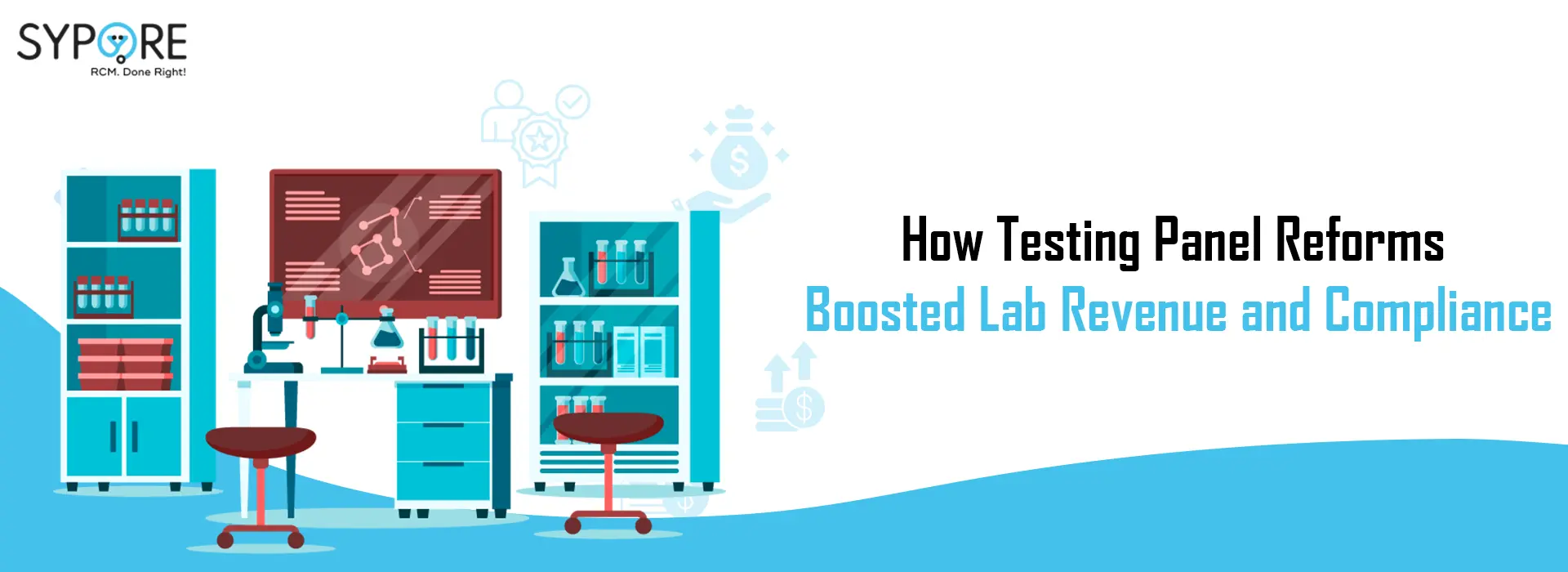
13 Feb How Testing Panel Reforms Boosted Lab Revenue and Compliance?
Introduction to Laboratory Testing Panels
Laboratory testing panels are crucial for diagnostics but often face inefficiencies and compliance issues. As healthcare evolves, innovative reforms are necessary to enhance accuracy and profitability. Testing panel reforms not only address existing challenges but also improve financial management through CPT code optimization and Electronic Fund Transfer (EFT) solutions.
Challenges Faced by Labs with Traditional Panel Testing Methods
Traditional panel testing methods are time-consuming, prone to errors, and lead to billing inaccuracies. Managing a vast array of CPT codes becomes cumbersome with outdated systems, resulting in billing inaccuracies and hindering financial management. The absence of real-time data integration hampers decision-making, and workflow inefficiencies demoralize staff, taking focus away from quality patient care.
The Benefits of Implementing Testing Panel Reforms
Increased Efficiency and Accuracy
Modern testing panel reforms replace outdated methods with automation and streamlined processes, saving valuable time for lab technicians and improving accuracy, thus fostering trust between labs and healthcare providers. Real-time data management allows labs to adapt swiftly to changing demands, maximizing output.
Improved Revenue and Profitability
Testing panel reforms enhance revenue and profitability by optimizing test selections and reducing unnecessary expenses. Focusing on high-demand panels attracts more clients, while CPT code optimization minimizes billing errors and maximizes reimbursement rates. Streamlined reimbursement processes through EFT solutions dramatically improve cash flow.
Better Compliance with Regulations
Streamlined processes reduce human error, resulting in fewer discrepancies in test results and reporting. Accurate data submission meets regulatory standards and fosters trust. Automation ensures precise documentation, and standardized protocols simplify adherence to complex regulations, mitigating risks associated with non-compliance penalties.
Best Practices for Effectively Implementing Testing Panel Reforms
To implement testing panel reforms effectively, start by assessing current workflows and identifying bottlenecks. Engage your team early in the process and provide comprehensive training on new protocols and technologies. Utilize technology like EFT solutions for streamlined financial transactions and CPT code optimization tools. Monitor outcomes regularly to ensure compliance and adjust as necessary.
Future Possibilities and Advancements in Testing Panel Technology
Emerging technologies promise to enhance lab accuracy and efficiency. Artificial intelligence can identify patterns that improve diagnosis rates, leading to personalized treatment plans. Advancements in automation streamline workflows, and integration with electronic health records (EHR) systems ensures timely access to essential data. Enhanced mobile applications for remote monitoring give patients more control over their health information.
Conclusion
Testing panel reforms offer significant benefits for labs, including improved efficiency, revenue, and compliance. As technology advances further into EFT solutions, the future looks promising for laboratories ready to embrace change. Success stories from various labs highlight the transformative power of these reforms, emphasizing the need for labs to adapt and thrive in a competitive healthcare landscape.
Sorry, the comment form is closed at this time.